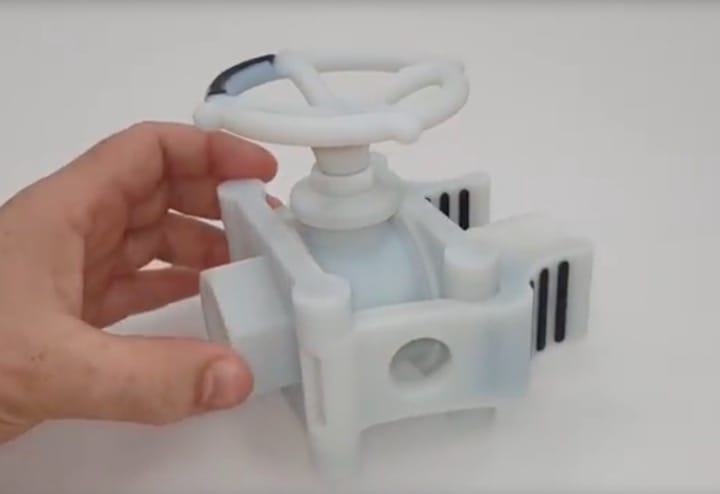
I’m reading an announcement about new materials from Stratasys, but I think there’s a bit more to the story here.
The announcement relates to new materials for their amazing J750 full color 3D printer. We wrote extensively about this machine when it was announced, simply because its output is startlingly realistic and unlike almost any other full RGB color 3D printing option.
When it first appeared, the J750 seemed ideal for a number of prototyping applications. To understand how this works, you have to get a glimpse into how prototyping is done at manufacturers: Typically a rough non-functional prototype is initially prepared, which goes through approval processes. If it survives, a more functional prototype is created for additional approvals using more relevant materials. Eventually the concept would be made in the final production materials and tested in real life situations. Things like color and texture only appeared later in the process.
The J750 blasted through this process barrier by providing a way to almost immediately apply full color textures to prototypes. In this way they could “short circuit” the typical manufacturer prototyping workflow. They could put prototypes in the hands of testers that actually looked like the production units to come.
But there was still a problem: the materials used to make these colorful prototypes were not exactly what would be used in production. Thus some engineering characteristics would be sacrificed, making the prototypes less functional than they could be.
https://www.youtube.com/watch?v=FcMvQG5FI1o
An example of this might be a prototype involving two or more parts that must snap together repeatedly. This might have been challenging on the original J750 materials, reversing some of the “short circuit” mentioned above.
But now that has changed. Stratasys announced three interesting materials that can change the prototyping equation again:
- Digital ABS Plus for tough, snap-together parts
- Agilus30, a rubber-like material for stretchy and bendy parts
- VeroFlex, a strong material suitable for eyeglass prototyping
Some of these materials were previously available on Stratasys’ other, non-color PolyJet machinery, but now they are usable in a full color environment as well. With these materials Stratasys should be able to again simplify the development process for color consumer prototypes.
But it seems to me that every time they add a new material capability, they take the technology a step closer to being able to product production parts. Imagine if the J750 could print a part in the exact materials intended for production? Then it would, in effect, be producing color production 3D printed parts.
The catch: it’s still too expensive to be considered for production. But making the technology do it at all is half the battle.
Via Stratasys

